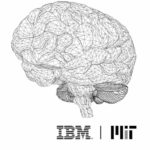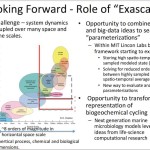Today IBM announced a 10-year, $240 million investment to create the MIT–IBM Watson AI Lab. “The combined MIT and IBM talent dedicated to this new effort will bring formidable power to a field with staggering potential to advance knowledge and help solve important challenges.”
MIT Professor Runs Record Google Compute Engine job with 220K Cores
Over at the Google Blog, Alex Barrett writes that an MIT math professor recently broke the record for the largest-ever Compute Engine cluster, with 220,000 cores on Preemptible VMs. According to Google, this is the largest known HPC cluster to ever run in the public cloud.
Video: A Look at the Lincoln Laboratory Supercomputing Center
“Guided by the principles of interactive supercomputing, Lincoln Laboratory was responsible for a lot of the early work on machine learning and neural networks. We now have a world-class group investigating speech and video processing as well as machine language topics including theoretical foundations, algorithms and applications. In the process, we are changing the way we go about computing. Over the years we have tended to assign a specific systems to service a discrete market, audience or project. But today those once highly specialized systems are becoming increasingly heterogeneous. Users are interacting with computational resources that exhibit a high degree of autonomy. The system, not the user, decides on the computer hardware and software that will be used for the job.”
MIT Lincoln Laboratory Takes the Mystery Out of Supercomputing
“Many supercomputer users, like the big DOE labs, are implementing these next generation systems. They are now engaged in significant code modernization efforts to adapt their key present and future applications to the new processing paradigm, and to bring their internal and external users up to speed. For some in the HPC community, this creates unanticipated challenges along with great opportunities.”
Video: JuMP – A Modeling Language for Mathematical Optimization
Miles Lubin from presented this talk at the CSGF Annual Program Review. “JuMP is an open-source software package in Julia for modeling optimization problems. In less than three years since its release, JuMP has received more than 50 citations and has been used in at least 10 universities for teaching. We tell the story of how JuMP was developed, explain the role of the DOE CSGF and high-performance computing, and discuss ongoing extensions to JuMP developed in collaboration with DOE labs.”
Video: HPC in Earth & Planetary Science using MITgcm
Christopher Hill from MIT presented this talk at the HPC User Forum. “The MITgcm (MIT General Circulation Model) is a numerical model designed for study of the atmosphere, ocean, and climate. Its non-hydrostatic formulation enables it to simulate fluid phenomena over a wide range of scales; its adjoint capability enables it to be applied to parameter and state estimation problems. By employing fluid isomorphisms, one hydrodynamical kernel can be used to simulate flow in both the atmosphere and ocean.”
XSEDE Powers Polymer Research at MIT
Researchers at MIT are using XSEDE resources to study polymers, the chemical compounds used to make plastic, rubber, and more.









